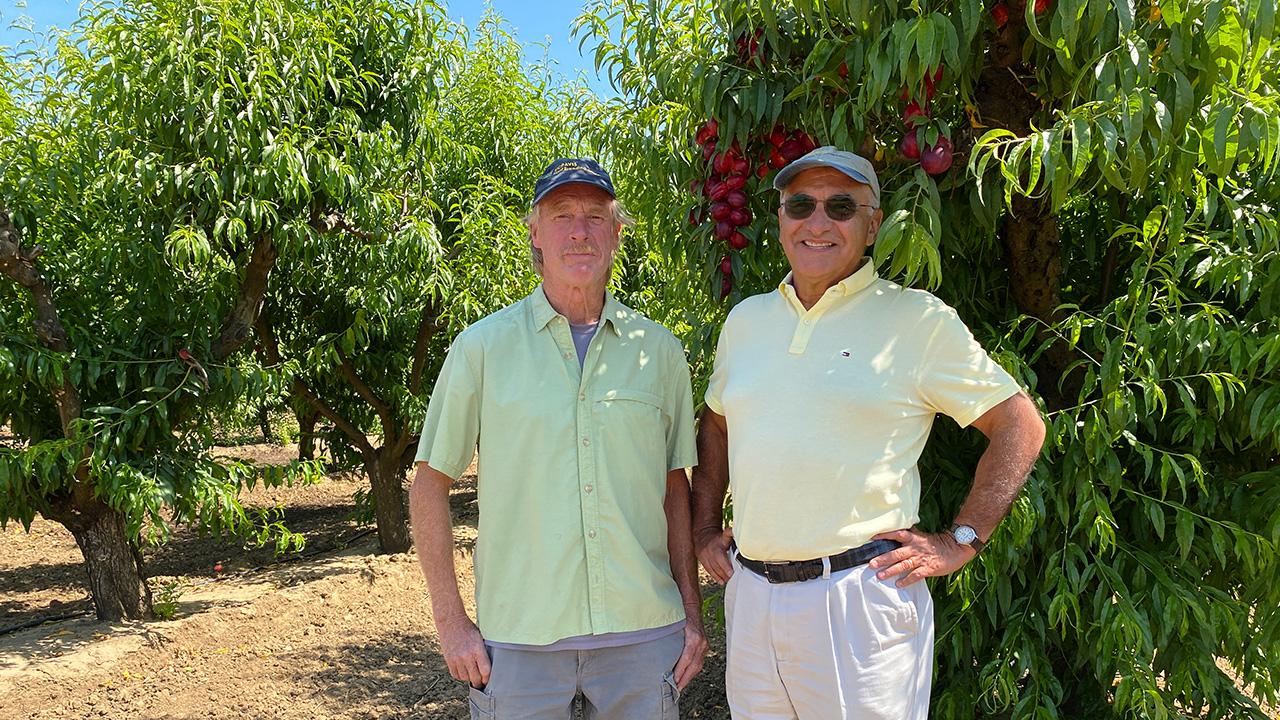
'Peach:' Crisosto and team produce handbook for growing quality fruit
Text covers planting to postharvest to canning
Peach book guides growing quality fruit from planting to postharvestTwo scientists who love peaches recently met up at an experimental orchard a few miles west of campus. Thomas Gradziel plucked a nearly ripe nectarine from one of the trees, whipped out a pocket knife, and sliced off juicy chunks for Carlos Crisosto to taste. Both are experts in orchard crops in the UC Davis Department of Plant Sciences.
The two made appreciative sounds as they pulled the fruit’s flavor across their palates, discussed how this variety compared to others, then quickly turned to details of production and orchard management.
Crisosto and Gradziel have poured decades of experience with orchard fruits into creating Peach, a landmark handbook on cultivation and postharvest considerations just out this month by CABI. It’s part of the international academic publisher’s Crop Production Science in Horticulture series.
“This will still be the definitive text for probably the next 20 years,” said Carlos Crisosto, who is one of the book’s editors and authors. He is both a distinguished professor and professor of UC Extension in the UC Davis Department of Plant Sciences.
Fun fact brought out in Peach: Nectarines are a peach without the fuzz, a genetic variation. “Most people don’t know that!” Crisosto said with a laugh.
“This book was a pleasure to contribute to, as it includes information from expert colleagues plus exciting new ideas and applications from our recent researchers,” added Gradziel, a professor in the department
In California, farmers cultivated 36,800 acres of peaches, producing 505,000 tons of fruit worth more than $378 million in 2021, according to the state Department of Food and Agriculture. While the crop ranks 23rd in-state based on cash receipts, California is the No. 1 producer of peaches for the entire United States, according to the U.S. Department of Agriculture.
The tome gives growers basic information that can reduce their risks, boost profits and help them face issues such as climate change and a shifting world market, CABI said in a press release.
To order

Crisosto teamed up with colleagues from Cyprus and Italy to edit this volume that takes an international look at a growing industry. Peach also explains that peaches are a member of the rose family, China is the world’s largest producer of the fruit (growing 60 percent of the global crop), and industry leaders yearn for trees with a flat canopy so the fruit would ripen all at about the same time and could be harvested easily by machine, reducing the cost of paying people to pick the fruit by hand.
Chapters also cover rootstock, cultivars, water management, fertilization, fruit growth and thinning, testing for maturity, and supply chain management after harvest. Several more chapters cover pests and diseases, maintaining fruit quality, nutritional aspects and canning.
Peach is available as an e-book and a softcover book. Both cost $80 each.
- Order the e-book here.
- The softcover edition will be available July 29. Sign up to be notified of its release here. Scroll down, then click on the words “Notify Me,” just above the green “Add to Cart” button.
Get a 20-percent discount with the code CCAB20 during the online checkout.
Sales staff for North and South America is based in Herndon, Va., and can be reached at StylusMail@PressWarehouse.com; or (703) 661-1581 or (800) 232-0223.
Media Resources
Trina Kleist, UC Davis Department of Plant Sciences, tkleist@ucdavis.edu, (530) 601-6846
